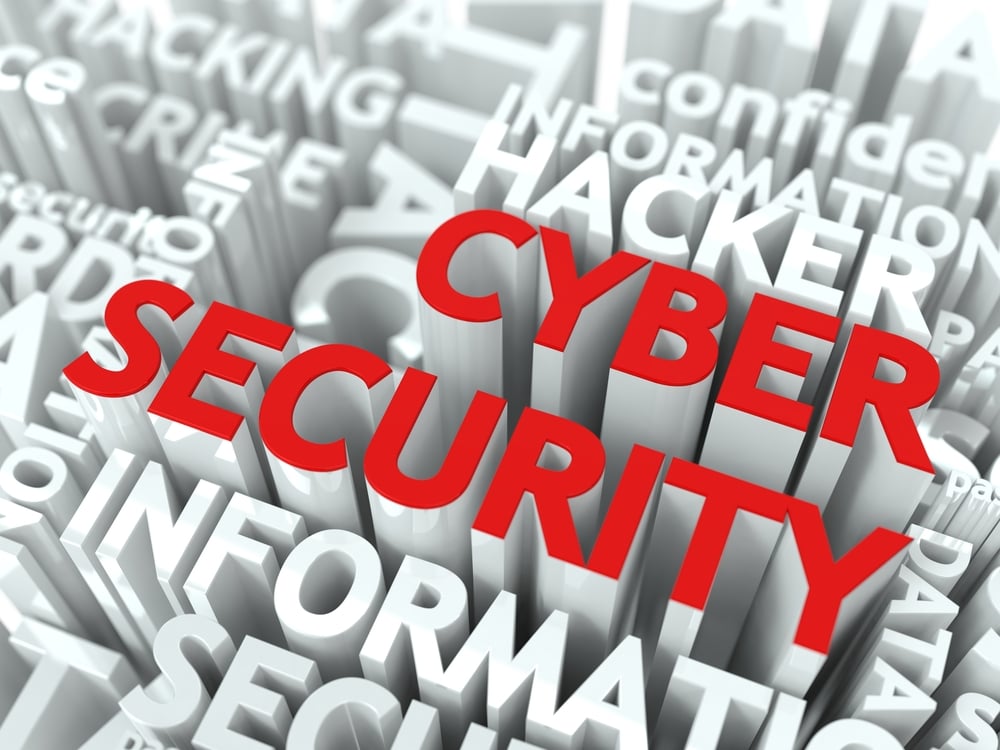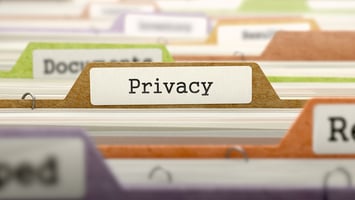IT Cybersecurity Essentials
INTRODUCTION TO IT CYBERSECURITY
In today’s world, cybersecurity is more important than ever. With the rise of the internet and digital technologies, our personal and professional lives are increasingly reliant on online systems and data. While these advances have brought many benefits, they have also created new risks and vulnerabilities. Cybercriminals can exploit these weaknesses to access our sensitive information, wreak havoc on our systems, and even steal our identities.
That’s why it’s critical that we all understand the basics of cybersecurity and how to protect ourselves online. In this course, we’ll cover the essentials of IT cybersecurity, from the basics of security concepts to best practices for securing your computer, network, and data. We’ll also touch on social engineering and phishing awareness, as well as mobile device security. By the end of this course, you should have a good understanding of how to stay safe in today’s digital world.
BASIC SECURITY CONCEPTS
Before we get into the specifics of securing your systems, let’s review some basic security concepts that will be helpful to understand.
Confidentiality, Integrity, and Availability
The first thing to know is that there are three primary goals of cybersecurity: confidentiality, integrity, and availability. Confidentiality means keeping information private and safe from unauthorized access. Integrity refers to maintaining the accuracy and completeness of data, so it can’t be modified without permission. And availability ensures that authorized users can access the information when they need it.
These objectives are often referred to by the acronym “CIA.” And they’re all equally important in ensuring the security of our systems and data.
Risk Management
Another key concept to understand is risk management. This is the process of identifying, assessing, and mitigating risks to our systems and data. When it comes to cybersecurity, there are always going to be some risks that we can’t eliminate completely. But by understanding the risks we face and taking steps to reduce them, we can minimize the potential impact of a security incident.
We’ll talk more about risk management later on in this course. For now, just know that it’s an important part of any security strategy.
SECURING YOUR COMPUTER
Now that we’ve reviewed some basic security concepts, let’s talk about how to secure your computer. There are a few key things you can do to make sure your computer is as safe as possible.
Install Security Software
The first line of defense against security threats is security software. This includes antivirus and anti-malware programs, which can protect your computer from viruses, malware, and other malicious software. It’s important to keep your security software up to date, so it can defend against the latest threats. And you should run regular scans to ensure that your system is clean.
Secure Your Wi-Fi Network
If you have a wireless network at home or work, it’s important to secure it properly. Make sure you use a strong password and enable encryption. You should also disable any remote management features that are not being used. By taking these steps, you can help protect your network from being hacked.
Keep Your Software Up to Date
One of the best things you can do to secure your computer is to keep your software up to date. This includes your operating system, as well as any applications you have installed. Software updates often include security fixes for newly discovered vulnerabilities. So by keeping your software up to date, you can help close any potential gaps in your security.
SECURING YOUR NETWORK
In addition to securing your individual computer, it’s also important to secure your network. This includes both wired and wireless networks.
There are a few key things you can do to secure your network. First, make sure you use strong passwords and enable encryption. You should also disable any remote management features that are not being used. By taking these steps, you can help protect your network from being hacked.
It’s also important to properly configure your routers and switches. Make sure they’re using the latest security features and that they’re properly configured for your network. By taking these steps, you can help prevent unauthorized access to your network.
Finally, consider using a firewall. A firewall can help block incoming traffic from malicious sources. It can also help control outgoing traffic to prevent sensitive data from leaving your network.
SECURING YOUR DATA
In addition to securing your computer and network, it’s also important to secure your data. This includes both the data stored on your computer and the data transmitted over your network.
There are a few key things you can do to secure your data. First, make sure you have proper backups in place. This way, if your data is lost or corrupted, you can restore it from a backup.
Second, encrypt your data. This will help protect it from being accessed by unauthorized users.
Finally, consider using a VPN. A VPN can help encrypt your data as it’s transmitted over the internet. This adds an extra layer of security and can help prevent your data from being intercepted by malicious users.
MANAGING USER ACCOUNTS
One of the most important things you can do to secure your computer is to properly manage user accounts. This includes creating strong passwords and using account lockout policies.
Creating strong passwords is one of the best things you can do to secure your accounts. A strong password should be at least 8 characters long and include a mix of uppercase and lowercase letters, numbers, and symbols. You should never use a dictionary word or common name in your password. And you should never share your password with anyone.
Another important thing to consider is account lockout policies. This is a security feature that disables an account after a certain number of failed login attempts. By implementing an account lockout policy, you can help prevent brute force attacks.
DATA BACKUP AND RECOVERY
Backing up your data is one of the most important things you can do to protect it. If your data is lost or corrupted, you can restore it from a backup. There are a few different ways you can backup your data. You can use an external hard drive, cloud storage, or an online backup service.
When choosing a backup method, you should consider both cost and convenience. External hard drives are typically the most affordable option, but they require you to manually connect the drive and copy your files. Cloud storage is more expensive, but it’s more convenient because it automatically backs up your files. And online backup services are typically the most expensive, but they offer the most features and convenience.
DISASTER PLANNING AND RECOVERY
Another important aspect of data security is disaster planning and recovery. This includes creating a plan for how you will recover your data in the event of a disaster. There are a few different things you should consider when creating a disaster recovery plan.
First, you need to identify what type of disasters could occur. This will help you determine which data needs to be backed up and how it should be stored.
Second, you need to decide how you will restore your data. This includes deciding which backup method to use and how you will access your backups.
Third, you need to test your plan. This helps ensure that it will work when you need it.
SOCIAL ENGINEERING AND PHISHING AWARENESS
Social engineering is a type of attack where the attacker tries to trick the victim into performing an action or disclosing information. Phishing is a type of social engineering attack where the attacker sends an email that appears to be from a legitimate source in an attempt to get the victim to click on a link or disclose personal information.
There are a few things you can do to protect yourself from social engineering and phishing attacks. First, you should be aware of these types of attacks and how they work. Second, you should never click on links or open attachments from unknown sources. And third, you should always verify the identity of someone before disclosing personal information.
CYBERSECURITY FOR MOBILE DEVICES
Mobile devices are becoming increasingly popular and they are often used to store sensitive data. This makes them a target for attackers. There are a few things you can do to secure your mobile device.
First, you should install a security app that includes features like antivirus protection and remote wiping. Second, you should enable two-factor authentication whenever possible. And third, you should be careful about the apps you install and the permissions you grant them.
WRAP UP: STAYING SECURE IN THE CYBER WORLD
The cyber world can be a dangerous place. But there are a few things you can do to stay safe. First, you should use strong passwords and enable two-factor authentication. Second, you should backup your data and create a disaster recovery plan. And third, you should be aware of social engineering and phishing attacks. By following these tips, you can help keep your data safe.
Glossary:
Cybersecurity: the practice of protecting your computer networks and user data from unauthorized access or theft.
Password: a secret word or phrase that is used to authenticate a user.
Two-factor authentication: a security measure that requires two forms of identification in order to access a account.
External hard drive: a storage device that is connected to a computer via a cable.
Cloud storage: a service that allows you to store and access your files online.
Online backup service: a subscription service that automatically backs up your files.
Disaster planning and recovery: the process of creating a plan for how you will recover your data in the event of a disaster.
Phishing: a type of social engineering attack where the attacker sends an email that appears to be from a legitimate source in an attempt to get the victim to click on a link or disclose personal information
Social Engineering: a type of attack where the attacker tries to trick the victim into performing an action or disclosing information
Two-Factor Authentication: a security measure that requires two different factors to verify the identity of a user, such as a password and a fingerprint
Virus: a type of malware that can replicate itself and spread to other computers
Malware: a type of software that is designed to harm a computer or its user
Computer systems: collections of computers and networks that are used to store, process, and share data.
Protecting systems: the practice of safeguarding computer networks and user data from unauthorized access or theft.
Security analyst: a professional who specializes in identifying and resolving security issues.
Cyber attacks: digital attacks that aim to harm a computer or its user.
Network security specialist: a professional who specializes in securing network systems.
Cybersecurity professionals: experts who work to protect computer networks and user data from cyber attacks.
Digital attacks: any type of attack that uses digital means to harm a computer or its user.
Network security: the practice of safeguarding network systems from unauthorized access or theft.
Sensitive data: information that should be protected from unauthorized access or disclosure.
Security solutions: products and services that are designed to protect computer networks and user data.
Physical security: the practice of safeguarding a physical space from unauthorized access or theft.
Network systems: collections of computers and networks that are used to store, process, and share data.
Security tools: products and services that are designed to protect computer networks and user data.
Maintain security: the practice of safeguarding computer networks and user data from unauthorized access or theft.
It cybersecurity specialist program: a program that trains individuals to become cybersecurity specialists.
Homeland security: the department of the United States government that is responsible for protecting the nation from terrorist attacks.
Information security analysts: professionals who specialize in identifying and resolving security issues.
Steal sensitive data: to illegally obtain information that should be protected from unauthorized access or disclosure.
Security events: incidents that pose a threat to computer networks or user data.
Network environment: the collection of networks and devices that are used to store, process, and share data.
Local area networks: networks that connect computers in a small geographic area, such as a home or office.
Cloud computing: the use of remote servers to store, process, and manage data.
Critical infrastructure: the systems and assets that are essential to the functioning of a society or economy.
Bachelor's degree: a undergraduate degree that is typically earned in four years of study.
Cybersecurity jobs: positions that involve protecting computer networks and user data from cyber attacks.
Intrusion detection: the process of identifying unauthorized access to a computer system.
Information security: the practice of safeguarding information from unauthorized access or disclosure.
Cybersecurity risks: the threats posed by cyber attacks to computer networks and user data.
Data breaches: incidents in which sensitive data is accessed or stolen by unauthorized individuals.
Information technology: the use of computers and networks to store, process, and share data.
Threat prevention: the practice of identifying and mitigating threats to computer networks and user data.
Application security: the process of safeguarding applications from cyber attacks.
Identity theft: the illegal use of someone else's personal information, such as their name or Social Security number, to commit fraud.
Security plans: documents that outline the steps that should be taken to protect computer networks and user data.
Entry level jobs: positions that do not require prior experience or training.
Computer forensics: the process of using computer science techniques to investigate crimes.
Technical diploma: a certificate that indicates that an individual has completed a course of study in a specific field.
Cybersecurity specialist: a professional who specializes in securing networked computer systems.
Smart devices: devices that are connected to the internet and can be controlled remotely.
Incident response: the process of handling and recovering from a security event.
Information systems: networks of computers and devices that are used to store, process, and share data.
Next generation firewalls: firewall technologies that provide better protection against sophisticated cyber attacks.
Application process: the steps that must be completed in order to be considered for a position.
Advanced cyberdefense programs: programs that train individuals to become experts in defending against cyber attacks.
New vulnerabilities: weaknesses in computer systems or software that can be exploited by attackers.
Login information: the credentials that are used to access a account.
Wide area networks: networks that connect computers in disparate geographic locations.
Systems networks: collections of computer systems and devices that are interconnected.
IT Cybersecurity Online Training
The importance of cybersecurity cannot be understated. In today's digital world, our lives are increasingly dependent on computer systems and the internet. We use them for everything from communicating with loved ones to managing our finances. As such, it's essential that we do everything we can to protect our networks and user data from cyber attacks.
There are many reasons why cybersecurity is important. First, cyber attacks can cause a great deal of harm to both individuals and businesses. They can lead to the loss of sensitive data, financial damage, and even physical injury.
Program Overview:
The IT Cybersecurity Online Training program is designed to provide individuals with the skills and knowledge necessary to protect computer networks from attack. The program covers a wide range of topics, including network security, firewalls, intrusion detection, and encryption. Upon completion of the program, students will be prepared to sit for the Certified Ethical Hacker (CEH) exam.
Learning Objectives:
Upon completion of this program, students will be able to:
- Understand the importance of IT security in today's world
- Identify common security threats and vulnerabilities
- Implement security measures to protect networks and systems
- Monitor networks for intrusions and respond to incidents
Course Outline:
Module 1: Introduction to IT Security
In this module, students will be introduced to the basics of IT security. Topics covered in this module include the types of attacks that can be launched against computer networks, the importance of protecting data, and the role of security professionals in ensuring the safety of information systems.
Module 2: Network Security
This module will focus on the concepts of network security. Students will learn about the different types of firewalls and how they can be used to protect networks from attack. In addition, students will be introduced to intrusion detection systems and learn how to use them to identify and respond to potential threats.
Module 3: Data Security
In this module, students will learn about the importance of encrypting data and protecting it from unauthorized access. Topics covered in this module include symmetric and asymmetric encryption, digital signatures, and PKI. In addition, students will be introduced to cryptographic attacks and learn how to defend against them.
Module 4: Security Policies and Procedures
This module will introduce students to the concept of security policies and procedures. Students will learn how to develop and implement security policies that are designed to protect information systems from attack. In addition, students will be introduced to the concept of risk management and learn how to identify and assess risks to information systems.
Module 5: Ethical Hacking
In this module, students will learn about the tools and techniques used by ethical hackers to test the security of information systems. Topics covered in this module include reconnaissance, scanning, enumeration, and social engineering. In addition, students will be introduced to penetration testing and learn how to conduct a legal and ethical hack.
Module 6: Disaster Recovery
This module will focus on the concepts of disaster recovery. Students will learn about the different types of disasters that can impact information systems and the importance of having a plan in place to recover from them. In addition, students will be introduced to the concept of business continuity and learn how to develop a plan to keep operations running in the event of a disaster.
Upon completion of this program, students will be prepared to sit for the Certified Ethical Hacker (CEH) exam. This exam is offered by the International Council of Electronic Commerce Consultants (EC-Council) and is widely recognized as a leading certification for ethical hackers. To earn the CEH certification, candidates must pass an exam that covers all of the topics covered in this program.



